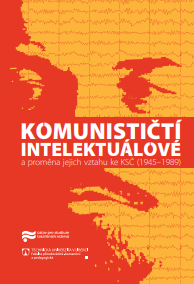
We kindly inform you that, as long as the subject affiliation of our 300.000+ articles is in progress, you might get unsufficient or no results on your third level or second level search. In this case, please broaden your search criteria.

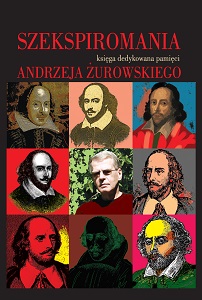
This article focuses on Jan Śniadecki (1756–1830), an eminent Polish philosopher of the late Enlightenment period, and on his attitude to Shakespeare. Jan Śniadecki was a major figure in the debate on the shape of modern literature and culture in Poland in 1818–1825. A representative of classicising Enlightenment values, Śniadecki was seen as a conservative and an opponent of Romanticism, and as such he famously makes an appearance in Adam Mickiewicz’s ballad “Romantyczność”, a poem whose motto is taken from Shakespeare. Śniadecki has been accused of harbouring an aversion to Shakespeare, and he has met with ridicule for a passage in one of his treatises where he wonders if a more polished and well-educated 19th-century Shakespeare would have made a better playwright. As shown by the authors of this study, Śniadecki was not actually hostile to Shakespeare, whose genius he hailed on numerous occasions. What he found objectionable was the unquestioning adulation for the author of Richard III, a phenomenon we now call Bardolatry, as distinct from the more positive term of “Shakespeare mania” which denotes a broad fascination with the assimilated heritage of the English playwright. It appears that Śniadecki has fallen victim to a stereotype made permanent by the lasting success of the Romantic aesthetic in Polish culture.
More...
This article focuses on the problem of dreams and the related cognitive, ontological and linguistic disorientation which leads to the experience of illusion. The article makes use of several highly intertextual plays including "Ślub" [The Wedding] by Witold Gombrowicz, "Balladyna" [Balladine], "Sen srebrny Salomei" [Salome’s Silver Dream] and "Samuel Zborowski" by Słowacki, and Shakespeare’s "A Midsummer Night’s Dream" and "Calderon’s Life is a Dream". These musings on 19th- and 20th-century literary texts invite reflection on the problem of the illusory nature of existence in post-modern thinking. Special attention is drawn to the diverse depictions of illusion in the plays and to their potential meanings.
More...
This short article presents the multi-dimensional links between the thoughts and works of Dostoevsky and the plays of Shakespeare. In one way or another, Dostoevsky lived his whole life under Shakespeare’s spell. He saw in Shakespeare an artist endowed with the power to reveal the ineffable aspects of reality, and his fascination is palpable in his numerous inter-textual allusions, quotations and cryptic references to Shakespeare’s plays as well as in his approach to characterisation (Stavrogin in The Possessed). Hamlet was a particularly important play to Dostoevsky, who saw Prince Hamlet as a champion of metaphysical rebellion. To him, Hamlet’s lines contained some of the most important existential dilemmas such as reflections on man’s place in the cosmos and musings on “existence” beyond the grave. From his youngest days suicide was always a lasting influence on Dostoevsky’s thinking; his best novels tend to contain characters who are “logically” drawn to suicide and have to undergo a variety of trials as if trying to find an ultimate answer to Hamlet’s famous question. To Dostoevsky, however, suicide was part and parcel of the human experience in a hopeless world stripped of all transcendence and stranded in a limbo between “the truth of science” and “the truth of faith”. Unlike the times of Hamlet, when things may have been chaotic but faith still prevailed, Dostoevsky’s characters exist in a period of empty transcendence and wanton free will, where suicide becomes a desperate attempt to find metaphysical consolation.
More...
In Shakespeare’s art, visual perception is entwined with touch, taste, hearing, and smell: the colour terms stimulate other senses, recalling their symbolic meanings in both ‘colourful’ plays (such as "Romeo and Juliet" and "The Winter’s Tale") and those dominated by bleak and darkish hues (such as "Richard III" and "Hamlet"). The paper surveys Shakespeare’s contemporary perception of colours so that we can understand more clearly what his colour usage means in the play, describes Shakespeare’s use of colour in "Richard III" and specifies what kinds of colour appear at which points in the play. It also covers the translation of colour in Japan, while particularly focusing on blue in Odashima’s 1983 translation, comparing it with other important translations in the history of the Japanese reception of Shakespeare.
More...
The first postage stamp bearing the image of William Shakespeare was issued 24 years after the world’s first ever stamp, the Penny Black, came out on 6 May 1840. Today, a complete collection of Shakespeare-themed stamps from all over the world would have to include almost a thousand items (stamps, stamp series, souvenir sheets, commemorative postmarks, first day covers, postcards) with hundreds of themes ranging from portraits of Shakespeare to scenes from his plays, including "The Merchant of Venice". Shylock first appeared on a postage, stamp issued by the Emirate of Fujeira as part of a nine-piece series (1969), followed by two Senegalese stamps (1972) and a Sierra Leone series (1989). The most recent Merchant of Venice-themed stamp is part of a ten-stamp series issued by Saint Vincent and the Grenadines, a tiny island nation in the Caribbean. The stamp shows Portia who is played, rather surprisingly, by the Disney character of Minnie (the series also shows Donald Duck as Hamlet, Mickey Mouse and Daisy as Romeo and Ophelia, Goofy as Mark Antony and Clarabell Cow as Titania). The Polish Post Office has never come up with Shakespeare-themed stamps, so the author takes the liberty of recommending a virtual series to feature portraits of famous actors appearing in performances of "The Merchant of Venice" in Gdańsk, including Siegfried Gotthilf Eckhardt (1780), Ludwig Devrient (1818, 1821), Ira Aldridge (1854), Marija Vera (1917), and others.
More...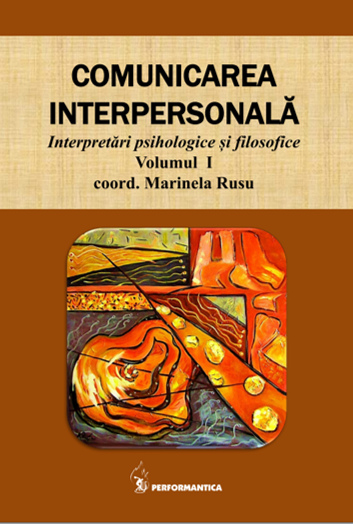
Considering as premise the playwriting of William Shakespeare being one of the touchstones of humanities, in this study we will rise the question about the method through which the work of the classic writer became a way of the contemporary society to reflect some of its most polemized, keen, difficult or challenging topics. Going on, a necessary answer will be given regarding the fact that the plays of the English author get today rather the utilitarian aspect in the scenic approach or if, in fact, there are more nuanced positioning. And there are, as we can not put aside the way that artists are often perceiving the message in a whole, not only on the edge of social, documentary or politic theatre. Therefore, what is it transmitted to us and what do we transmit to history when Shakespearean plays are staged in refuges camps or when debating the veteran’s status. In our approach we will focus on some main artistic directions or forum theatre examples: Love’s Labour’s Lost directed by Corinne Jabel at Kaboul in 2005, the Hamlet Globe Théâtre's production directed on refuges camp in Calais, in 2016, and also Macbeth directed by Peter Callender or the one directed by Amy Attaway from 2019, both talking about the veteran’s or vulnerable groups status. But we believe that each of those visions are simply emphasizing the idea that the great literature fights for fundamental humanist and moral principles.
More...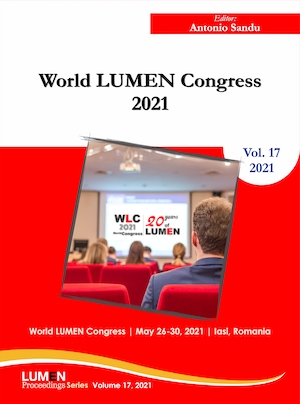
Objectives of this article refer to ways to increase self-confidence in students from different universities in Transylvania manifested by the values of self-depreciation, infatuation and self-esteem. These are realized through the use of complex exercises on music in the form of dance-therapy and body technique.Purpose: elaboration of an action strategy to modify the self-depreciation, self-esteem, infatuation.Hypothesis: by introducing the exercises of body technique and dance-therapy, the aim is to modify the components of the ASSI psychological test: self-depreciation, infatuation and self-esteemMaterial and Methods: statistical processing was performed with the program Stats Direct v.2.7.2. The graphical representation of the results was done with the Excel application (from the Microsoft Office 2010 package). The tests used are: ASSI and an intervention program based on exercises in body technique and dance therapy.The subjects participating in the experiment with a duration of 6 months by 200 students at the Technical University Cluj-Napoca, and the extension from Baia-Mare and from the Academy of Music "Gheorghe Dima" from Cluj-Napoca.The period: of development was between October 2019 and March 2020.The results: of this study are due to the intervention program through exercises in body technique and dance therapy performed by the experimental group compared to the control group. In the case of A-SN it is a good correlation but of the opposite direction, which means that if (A) self-depreciation decreases then (SN) self-esteem increases. In the case of I-SN it is an acceptable correlation and of the same meaning, which means that if (I) the infatuation increases and (SN) the self-esteem increases, were observed statistically significantly significant differences between the two times (p <0.001).Conclusions: Statistically significant differences were observed in the indicators of the ASSI tests (self-depreciation, self-esteem, infatuation) which indicates, that our intervention program in the preliminary study had a positive and measurable impact on students in terms of improving self-depreciation and infatuation, as well as increasing self-esteem.
More...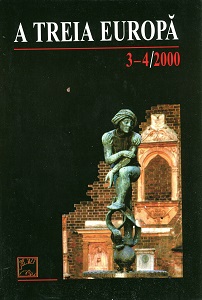
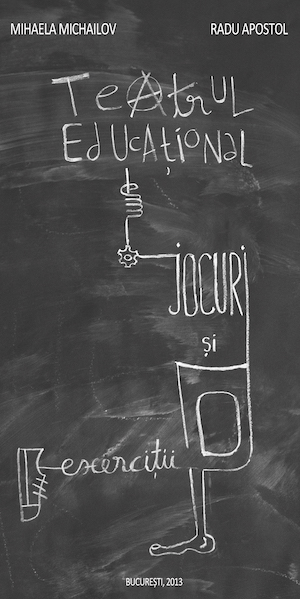
This book is a brief manual of games and theatrical exercises that the team of the show Familia Offline used during a year in the workshops that were the basis of the development of the show. The book includes dramatic writing exercises adapted to the performance script, theatrical improvisation exercises, vocal training exercises and a text about the working method of one of the theorists and practitioners who revolutionized theater pedagogy of the 20th century – Dorothy Heathcote.
More...
This book is a brief manual of games and theatrical exercises that the team of the show Familia Offline used during a year in the workshops that were the basis of the development of the show. The book includes dramatic writing exercises adapted to the performance script, theatrical improvisation exercises, vocal training exercises and a text about the working method of one of the theorists and practitioners who revolutionized theater pedagogy of the 20th century – Dorothy Heathcote.
More...
This book is a brief manual of games and theatrical exercises that the team of the show Familia Offline used during a year in the workshops that were the basis of the development of the show. The book includes dramatic writing exercises adapted to the performance script, theatrical improvisation exercises, vocal training exercises and a text about the working method of one of the theorists and practitioners who revolutionized theater pedagogy of the 20th century – Dorothy Heathcote.
More...
This book is a brief manual of games and theatrical exercises that the team of the show Familia Offline used during a year in the workshops that were the basis of the development of the show. The book includes dramatic writing exercises adapted to the performance script, theatrical improvisation exercises, vocal training exercises and a text about the working method of one of the theorists and practitioners who revolutionized theater pedagogy of the 20th century – Dorothy Heathcote.
More...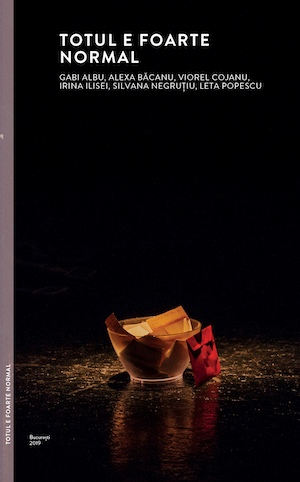
Îmi amintesc cum stăteam la Replika în curte și eram bombardată cu idei. Era începutul rezidenței mele, alături de dramaturga Alexa Băcanu. Apucasem să expun doar câteva lucruri la care mă gândisem: tema educației sexuale în România și comunicarea între părinți și copiii lor.
More...
Și de aici a început documentarea. Știm că în școală nu se întâmplă de obicei, dar într-un fel sau altul, tinerii află totuși despre sex. Care sunt sursele? Sunt ele de încredere? Le oferă toate informațiile necesare? La nivel de țară, răspunsul la ultimele două întrebări e nu. Suntem pe primul loc în Uniunea Europeană la numărul de mame minore. Ăsta e unul dintre primele lucruri pe care le-am aflat în timpul documentării.
More...
“Totul e foarte normal” nu beneficiază de un decor în sensul comun al cuvântului, ci de o configuraţie a spaţiului de joc și un raport între acesta şi auditoriu, care determină şi servesc conceptului spectacolului. Tema de la care am plecat a fost declanşarea comunicării pe teme tabu între generaţii într-o formulă ludică, prietenoasă şi jovială cu care să rezoneze ambele categorii de vârstă.
More...
„Nu, nu am vorbit încă, să nu îi dau idei” sau „Acum au internet, știu ei mai multe ca noi” – acestea sunt două argumente între care oscilează scuzele adulților pentru a evita tematica educației sexuale – fie ei părinți, cadre didactice, directori de școli sau autori de programe școlare. Dacă în toate țările dezvoltate, educația sexuală se predă în școli de zeci de ani, în România, educația sexuală nu se predă decât opțional în cadrul materiei Educație pentru sănătate. În 2016, numai 2.000 dintre cei 19.000 de directori le-au propus părinților să-și trimită copiii la aceste ore. Pentru mulți adulți este dificil de acceptat trecerea de la copilărie la adolescență, faptul că tinerii devin ființe de sine stătătoare care își fac propriile alegeri, inclusiv în ceea ce privește sexualitatea.
More...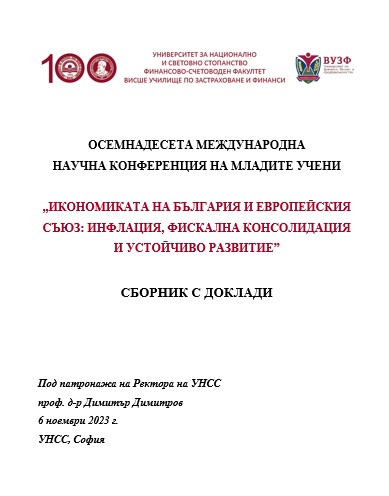
The report “Analysis of interest in the performances of the Bulgarian state theaters in the period 2018-2022” is a kind of analysis of demand and supply in the field of performing arts. The selected period covers the time before the Covid-19 pandemic and after, aiming to interpret the changes that occurred as a result of these events. The report analyzes live performance attendance data by gender, age, education, city, employment status, and more. The data on the number of theaters by type (dramatic, dramatic-puppet, musical), by form of ownership (state, municipal, private) are commented on. The data on average number of visits to one theater, average number of visits to one performance, number of new performances, number of tours are analyzed. The data on the revenues realized by the cultural institutes are also analysed. All data used are from the National Statistical Institute.
More...